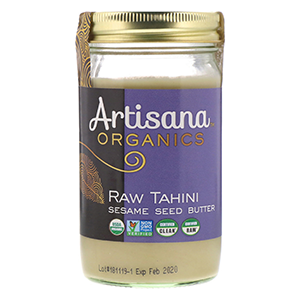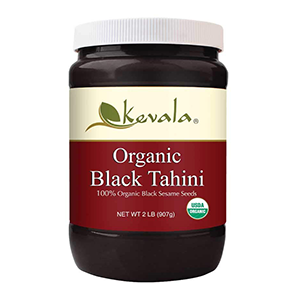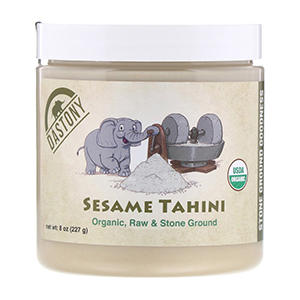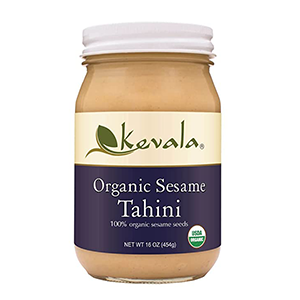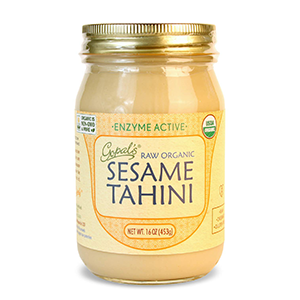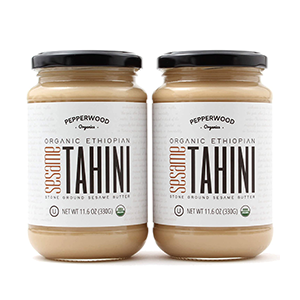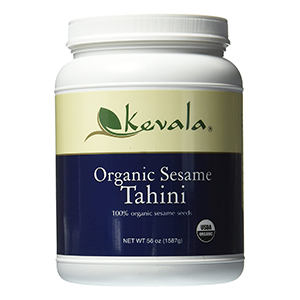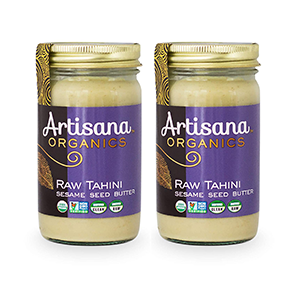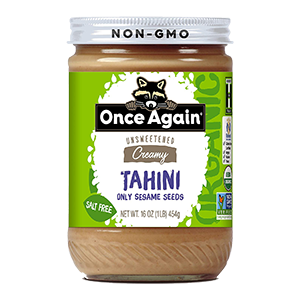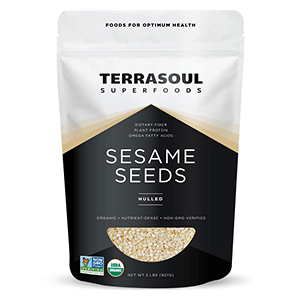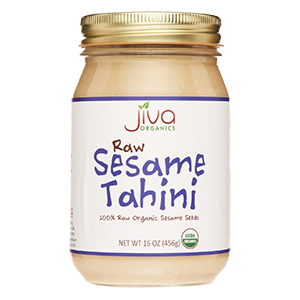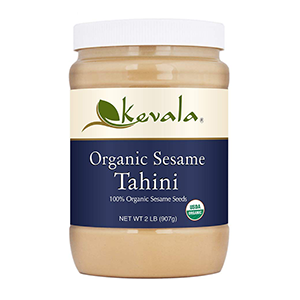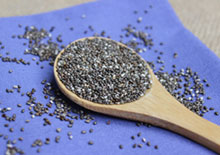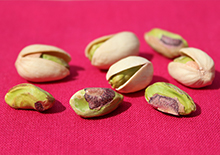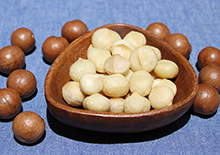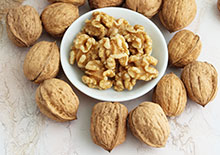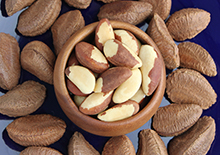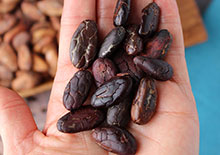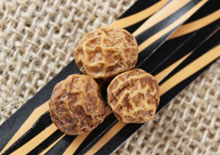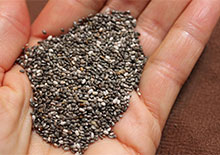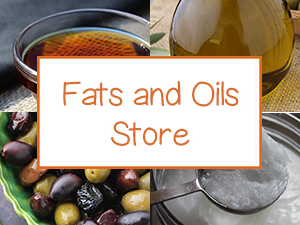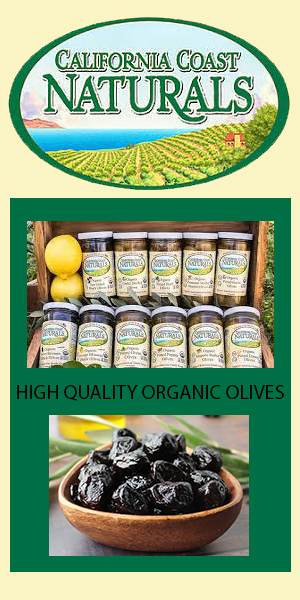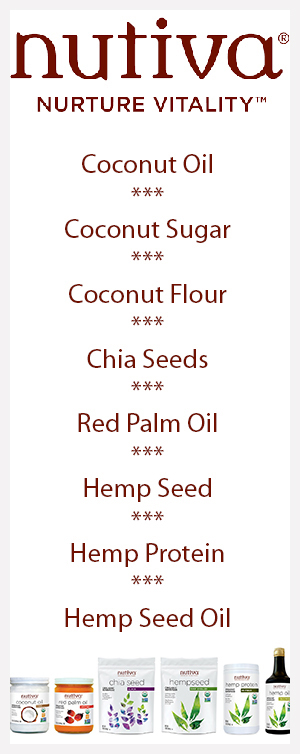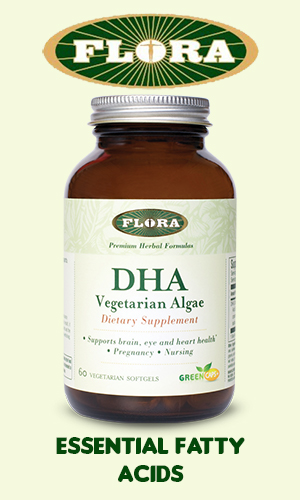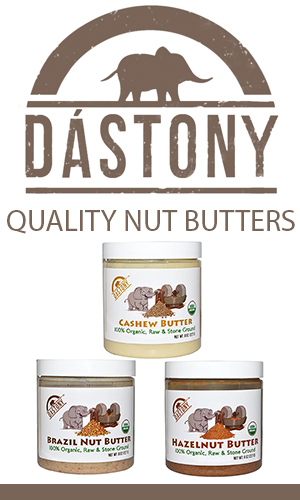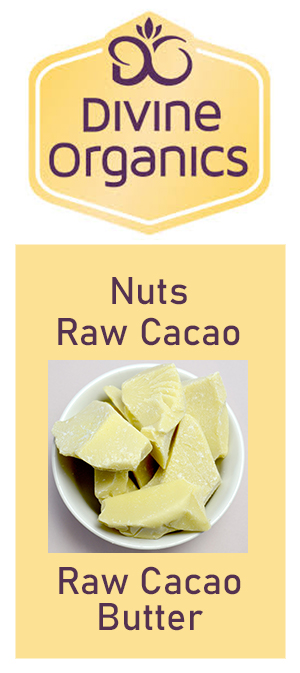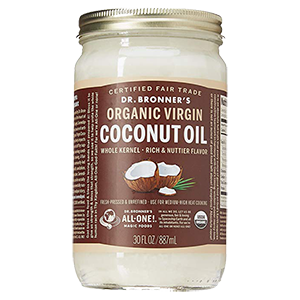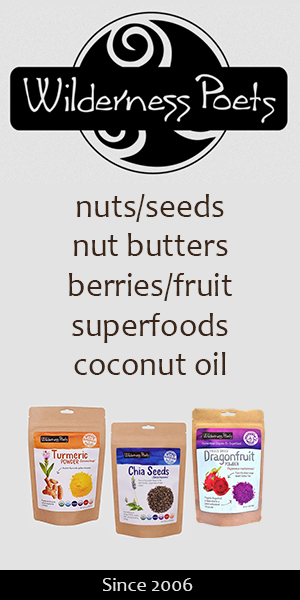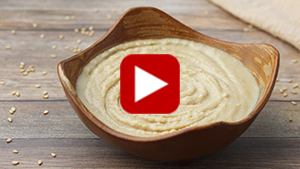- Home
- Nuts and Seeds
- Benefits of Tahini
Benefits of Tahini, Top Pros and Cons of Sesame Butter
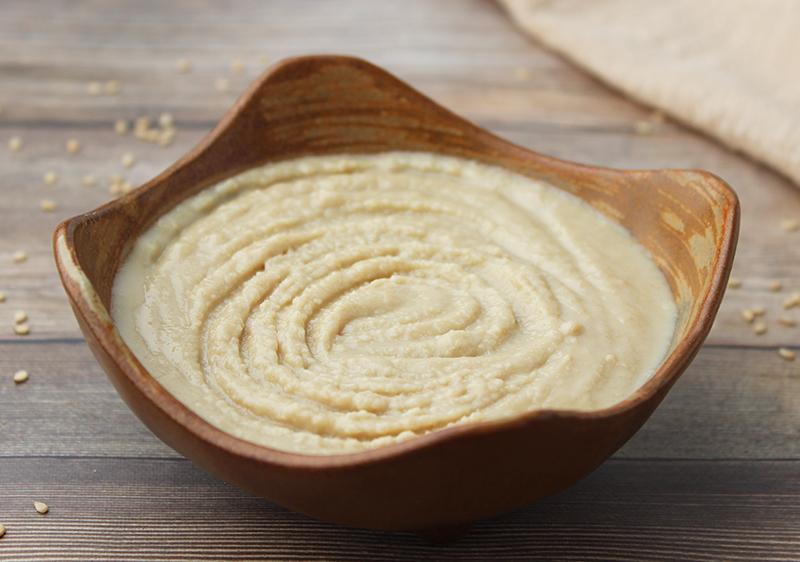
What is Tahini?
Tahini or sesame seed butter is a staple ingredient or condiment used in Middle Eastern and Mediterranean cuisine. It's most commonly used globally in foods like hummus, baba ganoush, desserts like halvah, and blended with lemon and garlic in dipping sauces.
Next to peanut butter, it is probably one of the top nut and seed butters utilized around the world especially in recent decades.
Tahini (pronounced tuh-hee-nee) is made from the sesame seed and contains a very high amount of oil content. Historically it is one of the oldest oilseed crops produced by humans.
It is originally sourced from wild drought-tolerant species in the genus Sesamum. Early domestication of the sesame plant is believed to have first occurred over 3,000 years ago by the ancient Indus Valley Civilization located between present-day Pakistan and India. Sesamum indicum is the main cultivated species utilized today.
Interestingly, the seeds themselves come from the capsules of the sesame fruit that when ripe pop open. The phrase "Open Sesame", made popular in the classic folk tale "Ali Baba and the Forty Thieves", is thought to come from this releasing of the sesame's "seed treasure."
Tahini is traditionally made from lightly toasted, stone-ground, hulled white sesame seeds and, depending on how it is processed, produces an almost liquid consistency or a smooth paste similar to other types of nut or seed butters. Modern versions of tahini are also made from raw untoasted sesame seeds and labeled "raw tahini" to make the distinction.
Below we will discuss the main nutritional benefits of tahini as well as some potential disadvantages.
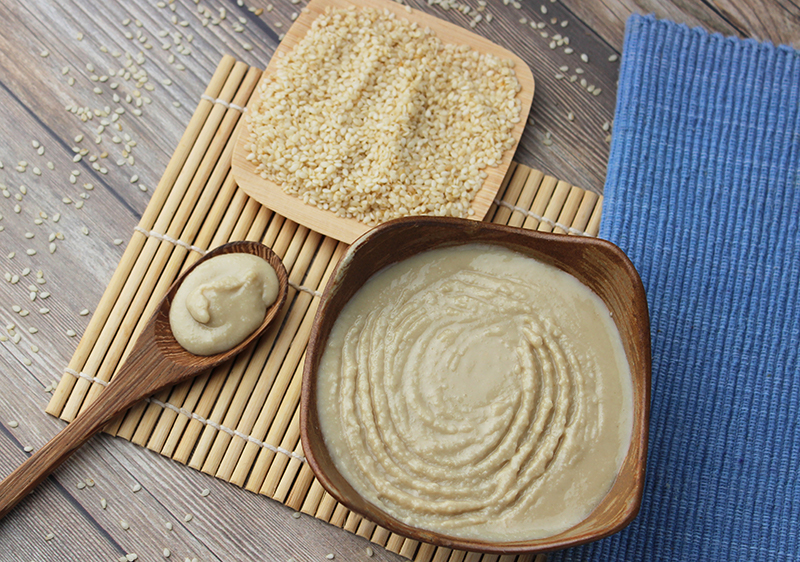
The Pros of Tahini
1) Benefits of Tahini as a Source of Calcium
Tahini for a very long time has been known in alternative vegan communities to be a good source of the mineral CALCIUM. And, yes, when compared to other types of nuts and seeds the unhulled sesame seed is top on the list for calcium content.
The NHS, the National Health Service of the UK, includes both sesame seeds and tahini consumption on their options of non-dairy sources of calcium for vegan diets.
Tahini, however, is typically made from hulled seeds which are known to contain much less calcium than brown unhulled varieties. The hull itself is found to contain what is known as "calcium oxalate", which is largely indigestible, whereas the hulled inner white seed kernel contains a much more absorbable form of this mineral.
More on Nut and Seed Nutrition Data
Most brands claim between 40-130 mg or 4-12% of the Daily Value for calcium per 2 tablespoons of tahini. According to the USDA Food Central Database, one tablespoon (15 grams) of raw stone ground sesame seed butter (*) as well as toasted tahini contains an average of 63 mg of calcium. (*)
So, based on the U.S. Food and Nutrition Board's Dietary Reference Intake of 1,000 mg of calcium a day for adults, the average 2 tablespoon
serving size (126 mg) would be about 12.6% of the Daily Value for calcium based on
an adult 2,000 calorie diet.
By comparison, 1/2 cup of whole cow's milk is about 138 mg or 13.8% the Daily Value. (*)
2) Benefits of Tahini, Has Lower "Antinutrient" Content
One of the issues with consuming raw nuts and seeds is their high amount of PHYTIC ACID content, the storage form of phosphorus. Sometimes this substance is referred to as an "antinutrient" because not only can it prevent nutrient assimilation, mostly of the minerals iron, zinc, magnesium, and calcium but can also cause digestive issues, like flatulence and bloating.
However, water soaking many varieties before use is believed to get rid of most of this digestive inhibitor. When it comes to tahini or sesame butter, salt-water soaking the seeds to remove the outer bran or hull from the kernel is a common practice, primarily done to reduce bitterness.
This is good news because the bran exterior is the major source of phytic acid content as well as the antinutrients called OXALATES, including the calcium oxalate previously mentioned.
Most tahini is made from HULLED seeds, which is sometimes (but not always) specified on the back of brand labels. This is the best for optimal nutrient uptake.
3) Benefits of Tahini, Contains Other Nutrients
Sesame seeds from a nutritional standpoint are a good food
source of the mineral COPPER with two tablespoons of tahini coming in at about .48 mg, 24% DV for this nutrient.
While pumpkin seeds and hemp seeds are top on the list for the ZINC mineral, sesame seeds
contain close to the same amount as pumpkin seeds per serving. Along with calcium, both
copper and zinc are also beneficial for strong healthy bones.
Sesame
tahini is notably a good source of manganese, phosphorus, iron, magnesium, potassium, and B vitamins such as thiamine as well as small amounts of
folate and niacin.
Tahini can be a better option eating straight sesame seeds because it's pre-ground, offering greater digestibility of these nutrients. Consumed in moderation in salad dressings, dips, or sauces, a small quantity of tahini can go a long way. Usually, about 2 tablespoons (30 grams) of tahini is a healthy portion size to consider.
Tahini (Toasted)
(Two Tablespoon Serving)
Copper - 0.4mg, 20%
Manganese - 0.4mg, 20%
Phosphorus - 220mg, 22%
Iron - 2.6mg, 14%
Calcium - 127.8, 13%
Zinc - 1.4mg, 9%
Magnesium - 28.4mg, 7%
Potassium - 124mg, 4%
Thiamin - 0.4mg, 27%
Niacin - 1.6mg, 8%
Folate - 29.4mcg, 7%
Toasted tahini compared to raw tahini, according to nutrition data, has about the same amount of nutrients. However, toasted tahini does seem to contain quite a bit more iron, probably due to the toasting process.
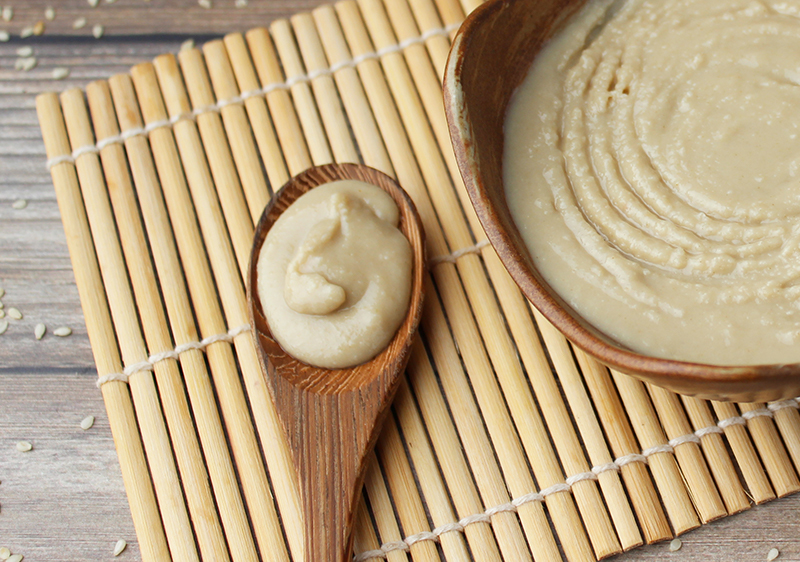
The Cons of Tahini
1) High in Omega-6 Polyunsaturated Fats
Even though the nutritional benefits of tahini are a definite bonus, there are some less advantageous aspects to consider if you happen to enjoy this seed butter on a frequent basis.
As we mentioned, sesame is a rich source of oil content. This is a
feature that is evident by the seeds oily-smooth consistency when ground as a seed butter or paste.
One tablespoon (15 g) of tahini is reported to contain a total of 3.5 g polyunsaturated fat. (*) The problem is that about 3469 mg of this is in the form of omega-6 fatty acids compared to only 61 mg in the form of omega-3 fatty acids, which is about a 57:1 ratio. This is quite a bit higher than the optimal 4:1 ratio.
It is generally believed by most nutritional health experts that maintaining a diet high in pro-inflammatory omega-6 fatty acids and low in anti-inflammatory omega-3 fatty acids may encourage chronic inflammation in the body. Most Western diets are notoriously high in omega-6 food sources like refined vegetable oils, grain-fed meat protein, and dairy products.
It is, therefore, best to eat tahini in moderation within a well-balanced diet including omega-3 sources of DHA like fish, seafood, and/or fish, krill or algae oil supplementation.
2) Source of Phytoestrogens
Sesame seeds contain substances that can act as phytoestrogens. This is due to oil-soluble LIGNANS such as SESAMOLIN and SESAMIN. While these compounds are shown in some research to have a health-enhancing influence identified to offer antioxidative potential at reducing low-density lipoprotein levels, they are also known phytoestrogens.
According to the Linus Pauling Institute, sesame is top on the list for dietary plant lignans, second only to flaxseeds. (Source)
Phytoestrogens are plant-derived substances or xenoestrogens that have a similar structure to estrogen which can either mimic the effects of estrogenic hormones or block their influence.
Although the science of how phytoestrogens affect human hormone levels has proven to be a complex issue that is not yet thoroughly understood, some research indicates that phytoestrogens can have varied effects from one individual to the next. So, using concentrated amounts of tahini in the diet can either have a positive or negative effect depending on many different factors.
Therefore, before regularly consuming phytoestrogen-rich foods, like sesame-based tahini, it may be helpful to seek the advice of a nutritionist or qualified healthcare practitioner who can specifically analyze your particular needs and health issues.
3) When to Avoid Tahini Consumption
Lastly, one disadvantage of tahini is that sesame seeds are known to be a top food allergen that can cause mild to severe health issues.
Tahini as a concentrated form of sesame seeds, therefore, should of course be avoided by individuals with nut or seed allergies but also by those who may have less common food sensitives to sesame in general.
Tahini can be a mucus-forming food that may cause potential congestion in the sinuses and chest. It is best avoided if you feel on the verge of a cold or flu or when your immune system is compromised.
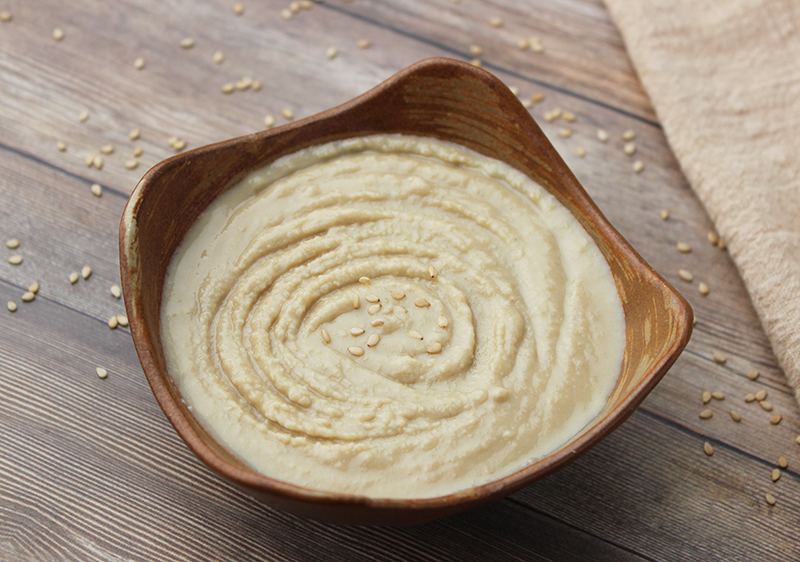
How to Use
Tahini is commonly mixed with foods like lemon, garlic, chocolate, and/or sweeteners, to cut the slightly bitter taste common to sesame seeds.
It is favored for its rich sesame flavor and creamy smooth texture which is often used in dips, sauces, salad dressings, or as an ingredient in numerous cultural dishes and desserts.
We use it in our hummus and desserts like our dehydrated oja balls, crone candy, and our raw halvah recipe.
Precautions:
Consult a healthcare professional like a nutritionist or dietitian before adding tahini to the diet if you are pregnant, nursing, have a serious medical condition, or are taking prescription medications.
Shop Related Products (About Affiliates & Amazon Associate Paid Links)
Affiliate Disclaimer: This section contains affiliate product links. If you make a purchase through our recommended links, we receive a small commission at no additional cost to you. Thanks for the support.
